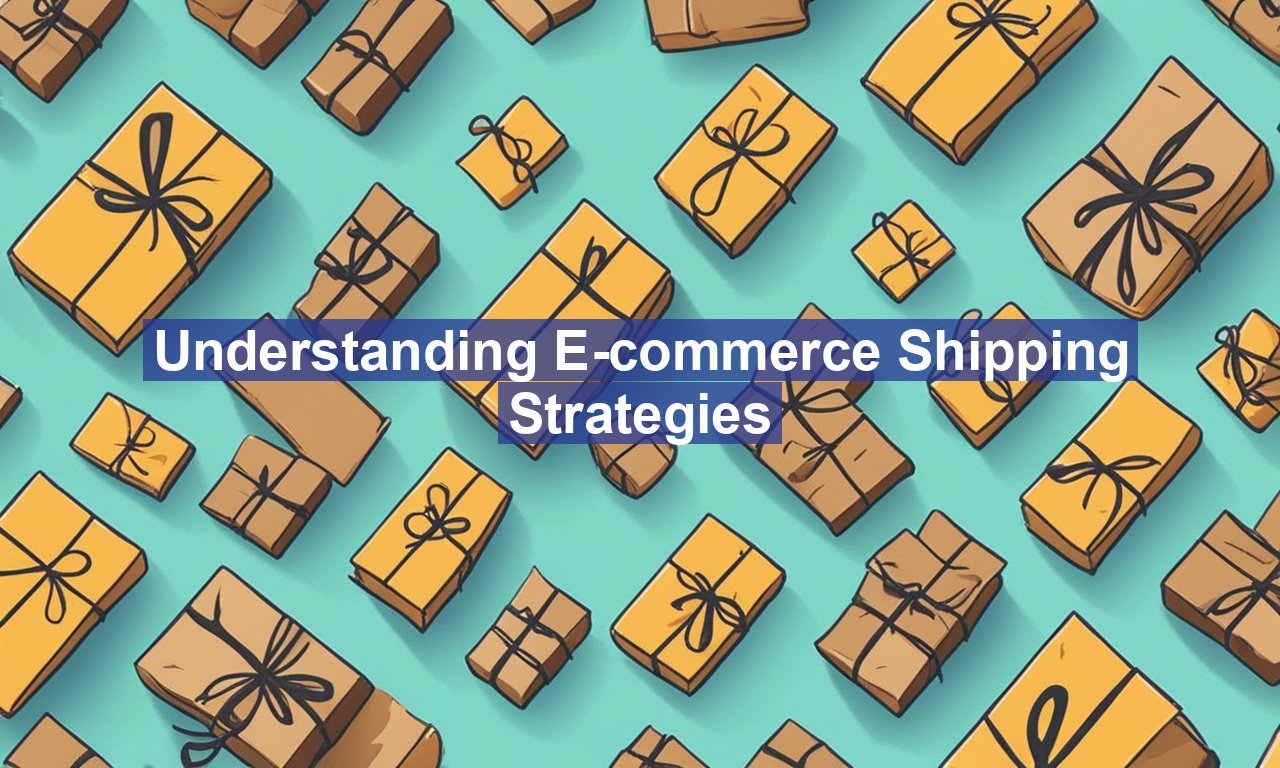Understanding E-commerce Shipping strategies, and diving into the world of e-commerce can be thrilling, but it often comes with its set of challenges, especially when it comes to shipping strategies. Nailing down the perfect approach isn’t just about getting products from point A to point B—it’s about crafting a seamless experience that keeps customers happy and coming back for more. This blog post will walk you through the essentials of e-commerce shipping, laying out actionable strategies that can boost your business’s efficiency and customer satisfaction. Ready to elevate your shipping game? Let’s get started.
Why Understanding E-commerce Shipping Strategies Matter
When managing an online store, shipping isn’t just a logistical concern—it’s a critical aspect of the customer’s experience. A well-executed shipping strategy can be the difference between a one-time buyer and a loyal, returning customer. High shipping costs or delayed deliveries can cause cart abandonment, while seamless, budget-friendly shipping can foster trust and encourage repeat purchases.
Customer Expectations
Today’s e-commerce shoppers have high expectations. They often look for:
- Fast Delivery: Thanks to giants like Amazon, quick delivery times are now a standard expectation.
- Transparent Tracking: Customers want to know where their order is and when it will arrive.
- Reasonable Shipping Costs: No one likes unexpected costs at checkout. Free shipping is a major plus.
Key Components of an Effective Shipping Strategy
Crafting a winning shipping strategy is about balancing cost, speed, and reliability. Here’s a closer look at the key components involved:
1. Shipping Rates
Setting the right shipping rates is crucial. There are a few strategies to consider:
- Free Shipping: Everyone loves free shipping, but this usually means you’ll need to absorb the cost. It can boost sales, but make sure to factor it into your pricing model.
- Flat Rate Shipping: Charging a uniform rate irrespective of the order size or weight can simplify the process, but you’ll need to ensure the rate is fair to cover costs.
- Real-Time Carrier Rates: With this option, customers pay what the carriers charge. It’s transparent and fair but can sometimes discourage shoppers if rates are too high.
2. Shipping Methods
Offering multiple shipping options can cater to different customer preferences. Standard shipping works for most, but expedited solutions are valuable for urgent orders. Consider working with multiple carriers to provide a range of options like overnight shipping, two-day delivery, and economy shipping.
3. Packaging
Packaging plays a dual role in shipping: protecting the product and representing your brand. Consider these tips:
- Eco-Friendly Options: Consumers are increasingly concerned about sustainability. Eco-friendly packaging can improve your brand image.
- Branding: Thoughtfully branded packaging can create a memorable unboxing experience, encouraging social media shares and word-of-mouth marketing.
Technological Tools to Enhance Shipping
Leveraging technology can streamline your shipping process, making it more efficient and cost-effective. Here are some tools to consider:
1. Shipping Software
Shipping software applications can integrate with your e-commerce platform to automate label printing, tracking, and rate comparison among carriers. These tools can save time and reduce errors, making overall operations smoother. Some popular options include ShipStation, Easyship, and Shippo.
2. Inventory Management Systems
Strong inventory management is crucial for timely shipping. An integrated inventory management system helps monitor stock levels, predict demand, and prevent overselling, ensuring that products are always available for shipment.
Shipping Policies and Clear Communication
Having a clear, detailed shipping policy builds transparency and trust with your customers. Make sure your shipping policy includes:
- Delivery Times: Provide realistic estimates and avoid over-promising.
- Shipping Costs: Outline how shipping costs are calculated and any additional fees.
- Return/Exchange Information: Explain your return process clearly to avoid confusion.
Be sure to place your shipping policy where customers can easily find it, such as in the footer of your site or during the checkout process.
Meeting Global Challenges
Going global with your e-commerce store can unlock new opportunities, but it also presents unique challenges. International shipping options, customs regulations, and differing tax laws can complicate the process. Here are some pointers:
1. International Carriers
Choose reliable carriers experienced in international shipping. Look for options that offer full tracking and customs brokerage services to ease the process.
2. Understanding Duties and Taxes
Make sure you (and your customers) are aware of any additional costs related to international shipping, such as VAT, GST, and other taxes. Services like DutyCalculator can help estimate these fees accurately.
Continual Optimization
An effective e-commerce shipping strategy isn’t set in stone; it requires regular reviews and adjustments. Track key metrics such as delivery times, shipping costs, and customer feedback to identify areas for improvement. Regularly evaluating your shipping strategy can help you remain competitive and adapt to changing market trends.
In conclusion, a robust e-commerce shipping strategy encompasses more than just selecting carriers and setting rates. It’s about meeting customer expectations, leveraging technology, and constantly refining your approach to ensure efficiency and satisfaction. For further reading on success factors in e-commerce, check out this comprehensive guide and this article on e-commerce tips. Here’s to shipping success!


